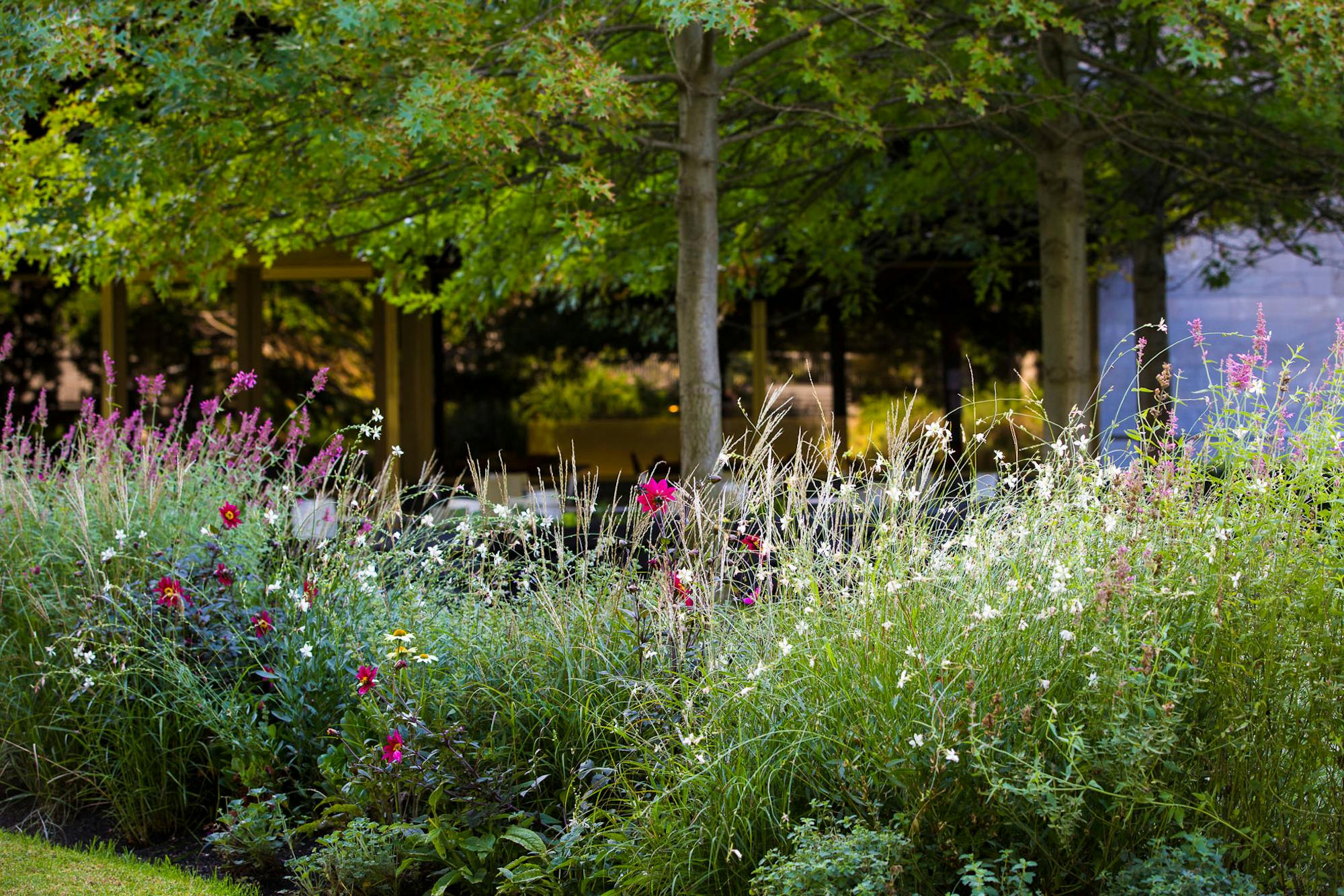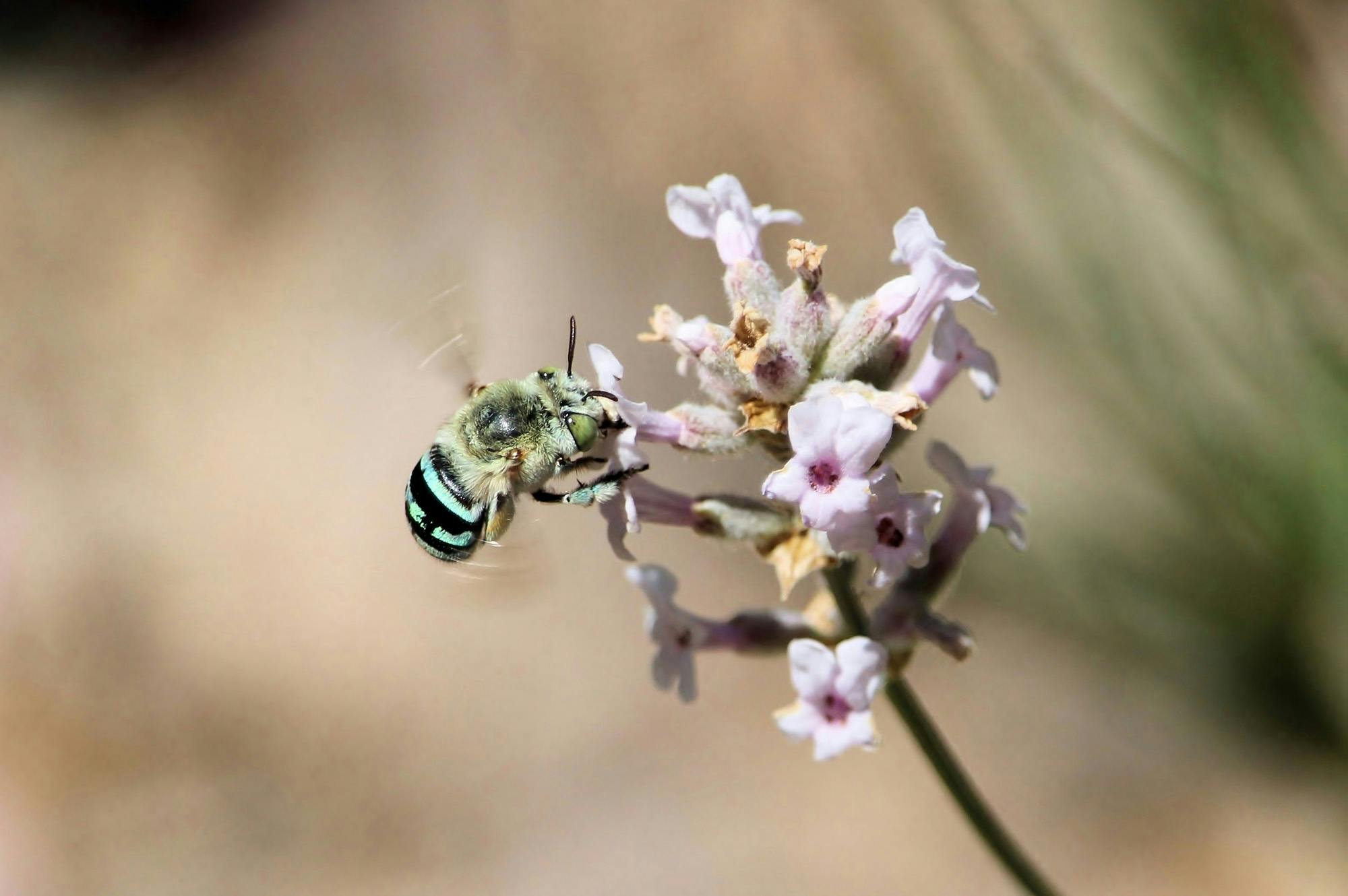
Image: NGV Garden by Claire Takacs.
Australian Pollinator Week
11–19 November 2023 is Australian Pollinator Week, and it’s a great time to learn more about pollinators and biodiversity.
Pollinators drive biodiversity, providing essential ecosystem services in the natural landscapes and within agricultural/horticultural and urban environments. According to the Intergovernmental Science-Policy Platform on Biodiversity and Ecosystem Services (IPBES), most cultivated and wild flowering plant species depend on pollinators – including a significant portion of the world’s food crops. However, the ecosystem services provided by pollinators extend beyond food and flowers, by nurturing biodiversity, they also contribute to nutrient recycling, soil formation, primary production, climate regulation, water purification, and well-being.
Our Planting and Biodiversity Working Group has been busy researching plant communities in the areas where we work and exploring methods of assessing our designs against biodiversity criteria during internal project design reviews to ensure that our planting designs consider pollinators. We’ve recently shared lists of the diverse plant species we’ve selected for green roofs in the Burnley Green Roof Plant Guide, which aims to support the creation of flourishing green roofs in Australian conditions, and we are exploring ways to collaborate on Biodiversity Sensitive Urban Design to scale up our impact.
Australian Pollinator Week acknowledges the continent’s unique pollinators, raising awareness of their importance and the urgent need for further local research to monitor diversity and numbers over time to understand what is happening.
You can contribute by joining the Australian Pollinator Count citizen science project – if you pass the knowledge test! Learning guides and videos are available to take you through the ‘ABC’ of insect ID. After that, you simply need to observe some flowers for 10 minutes, record the pollinators you see and register your results.
Other ways you can get involved:
- Plant for Australian native bees
- Create a pollinator habitat garden
- Build a pollinator nest
- Attend an event
- Listen to ‘Five Things: How to help our native bees’
Held each spring, Australian Pollinator Week began in 2015 following a community project in Greater Western Sydney called ‘Bee Aware of Your Native Bees’ which aimed to promote the conservation of native bees by building awareness of their existence and importance as pollinators and increasing existing populations with the installation of bee hotels.
In the northern hemisphere, Pollinator Week is celebrated annually in June.
